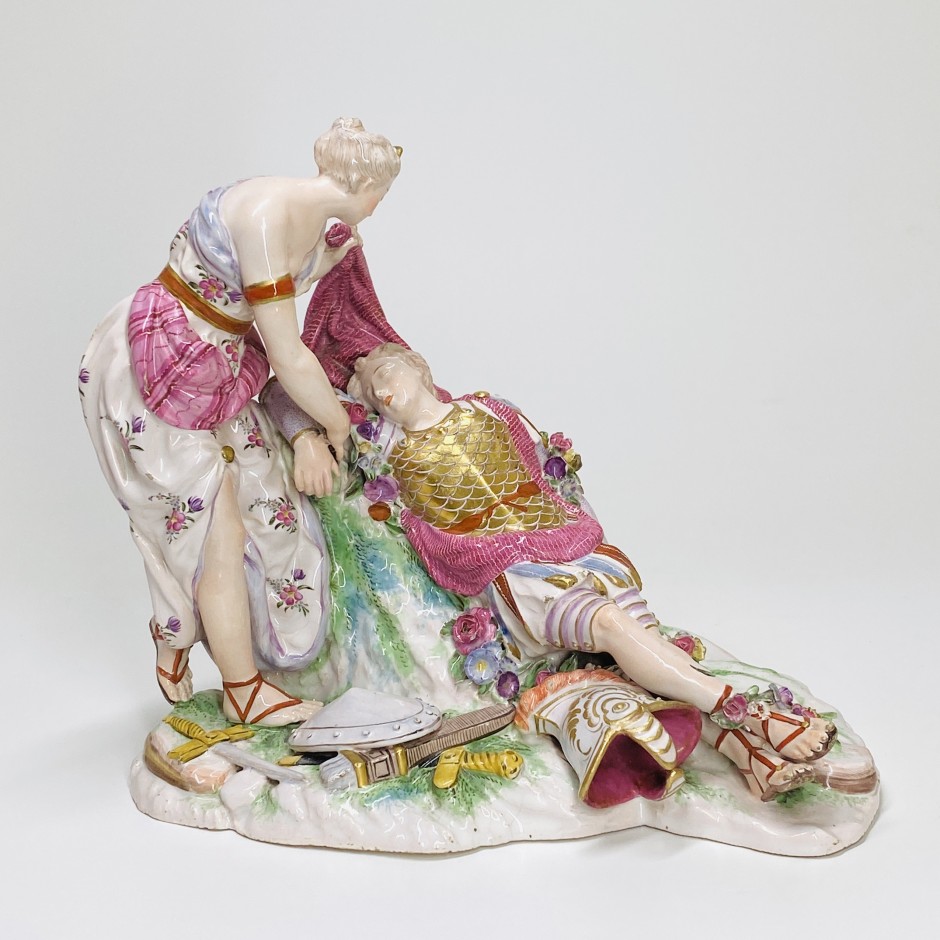Niderviller - Earthenware group "Renaud and Armide asleep" - Eighteenth century
More info
Group with two figures in Niderviller earthenware with polychrome and gold decoration representing Renaud and Armide asleep,
after the work of the sculptor Lemire.
Eighteenth century - around 1765-1770
Armide's head is restored (see photos)
Length: 22cm - Height: 20cm
A similar group in Niderviller earthenware, after the work of the sculptor Lemire, is reproduced in the repertoire of French earthenware by Dr. Chompret (plate 25A).
Additional information and photos on request.
The subject evoked by this group is borrowed from the poem by Tasse (1575), Jerusalem Delivered, taken up by many painters and popularized by a lyrical tragedy Armide by Lully on a libretto by Quinault (1686) then by that of Gluck (1777). In front of Jerusalem besieged by the Crusaders, the Frankish knight Renaud is prisoner of the magician Armide who soon abandons herself to her love. Renaud, delivered from the spells, will soon join his companions to take Jerusalem and Armide will perish in the ruins of his palace. The Niderviller group represents the scene where Armide, discovering Renaud asleep, chains him with flowers. Boucher, who had painted a picture on this subject for his reception at the Royal Academy of Painting and Sculpture, executed a cartoon representing Renaud asleep for the Gobelins factory (1752), then collaborated on the sets when the opera was revived in 1761 (François Boucher, RMN, 1987, P. 166). Carle Vanloo produced several paintings in 1732-1733 for the Royal Palace of Turin, including Armide finding Renaud asleep and Armide chaining Renaud with flowers, theme of the Niderviller group (Carle Vanloo, Catalog of the Nice-Musée Chéret exhibition, Clermont- Ferrand-Musée Bargoin, Nancy-Musée des Beaux-Arts, 1977, pp. 32-33). This group is undoubtedly contemporary with Renaud and Armide that Cyfflé made in Lunéville in the land of Lorraine (Céramique lorraine, 1990, p. 185). Although the subject is similar, the attitude of the characters, their clothes distinguish the group of Niderviller from that of Lunéville and therefore do not allow it to be attributed with certainty to Cyfflé. Catalog of the collections of the Museum of the country of Sarrebourg - Earthenware of Niderviller. 2002












